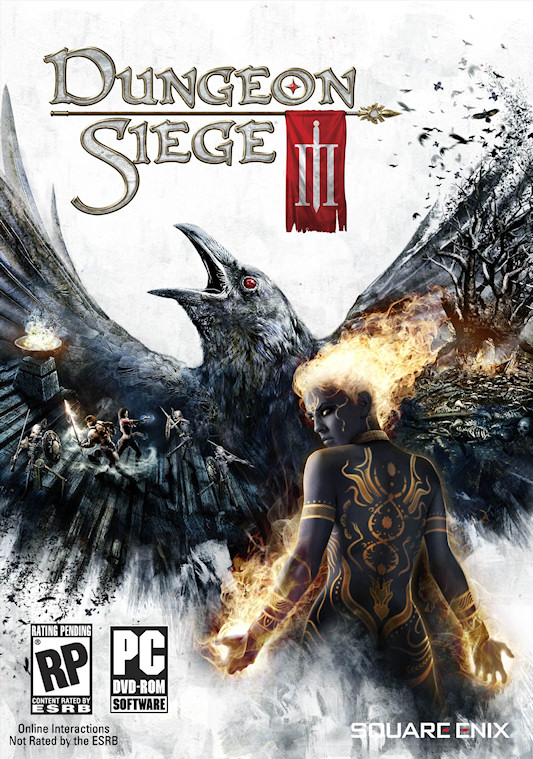Dungeon Siege III Preview
-
Category: PreviewsHits: 18803

Article Index
Page 5 of 5
Multiplayer I've tried my hand at quite a few action RPGs over the years, but the titles that drew my interest most were those that featured cooperative multiplayer. Thankfully, Dungeon Siege III follows the tradition of the first two titles in the series by allowing as many as four players to team up and battle their way through the game start-to-finish. There are some notable differences in the way the game plays when you're adventuring with a friend or three, though, so I thought I'd take the opportunity to devote a section to the multiplayer mechanics.
One of the main focuses the team had when developing the co-op multiplayer mode was to make it as drop-in and drop-out friendly as possible. Essentially, this means that if you're playing through the game with an AI-controlled companion, and your friend/brother/whatever sits down next to you and wants to play, they can immediately take control of the companion (and switch to any of the other characters that have been recruited during the story at that point) regardless of what you're doing at the time. And they won't be jumping in three levels behind, either - experience sharing is always kept in sync across all characters so that everyone levels up at the same time. If that same player decides they've had enough of the game after an hour of playing, they can drop out at any time and let the AI resume control. In fact, the AI automatically takes over if a player isn't responding within a set period of time. This will no doubt be a bigger boon to online co-op than couch co-op, but it's a nice addition nonetheless.
Once you're in the game with a player-controlled companion, you'll discover that you can no longer swivel the camera. Rather than giving all of the players control over the camera (in what would no doubt be a seizure-inducing nightmare) or implementing a split-screen mode, Obsidian designed the game's multiplayer in such a way that the game procedurally shifts the camera in what it feels is the best position for the action taking place on the screen. This might sound a bit worrisome, but if you've ever given the Baldur's Gate: Dark Alliance titles a whirl, then you'll know that it can work pretty well.
Should you or your companions be defeated in battle, any players still standing can attempt to resuscitate their fallen comrades. This doesn't require a particular talent or that you have any specific resources in your inventory - it just takes time, which may be something you have very little of during a boss fight. If a player is successfully revived (and you can be revived by AI-controlled companions, too), they return to the fight at 50% health. If all the characters die before a successful revival can be performed, you'll have to load a saved game. And while I'm on the subject of saved games, it's worth noting that players can only save their game at what I can only describe as golden pillars of light that stream from the ground at convenient locations (in town, near major battles, etc.).
One final aspect of multiplayer that I feel is important to touch upon is the way characters are carried over (or, well, not carried over) after a co-op game is disbanded. If you've joined someone else's game, none of the experience, gold, loot, or story progress that you gained during the play session will be retained on your local PC or console. It seems a bit strange for a co-op game to be designed like this, but assuming the mechanics used in the early build I was shown are carried through until release, only the hosting player will be able to save the game and keep the goodies that the group was able to find. Those of us who already intend to play through the game from start to finish with a friend or two won't have much of an issue with this, but I can't help but think that it will discourage strangers from jumping into random games online when there are only some fond gaming memories to be gained. Of course, we know very little about the game's online matchmaking at this point, so it's possible that this could turn out to be a non-issue by the time the game is released.
Another Obsidian Experience Coming Soon
And there you have it. Ultimately, I feel that Obsidian is taking Dungeon Siege III in the right direction, particularly for those of us who are fans of their previous titles. They're retaining the hack n' slash combat and loot mechanics that have become a staple of the action RPG, but then they're also pushing things a bit further by layering a hefty dose of lore, dialogue, and thought-provoking quests on top of an interesting storyline. There are some important aspects we still don't know much about - how the keyboard/mouse control scheme will turn out, how the multiplayer lobby system will work, whether replayability will be an issue, and so forth - but I suspect that we'll be hearing a lot more about these topics over the next couple of months as the game draws closer to its May 31st release date. And I'll be listening intently.


